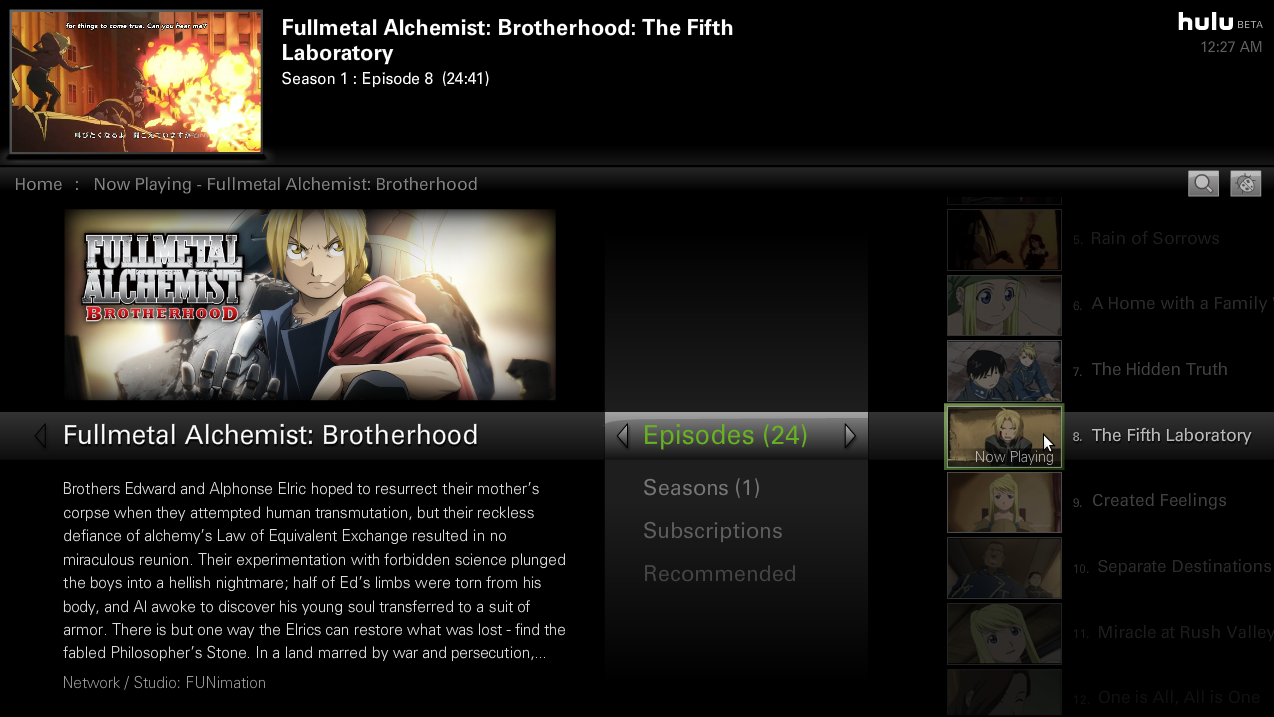Hulu Desktop was only available for Windows and Mac OS X when it launched in May. This week, the popular streaming video service has finally brought its experimental desktop player to the Linux platform. Installation packages are available for download from the Hulu Labs website.
I tested Hulu Desktop on Ubuntu 9.04 with Flash 10 on my quad-core desktop computer. The program is built almost entirely with Flash and obviously doesn't use any native widget frameworks. Adobe's Flash implementation for Linux is lousy, so I began my tests with relatively low expectations. As expected, Hulu Desktop is extremely resource intensive on the Linux platform. It uses significantly more memory and processor power than Totem when playing full-screen video content. Aside from occasional stuttering, video playback performance was adequate when I was not running any other resource-intensive tasks in the background.
Installation packages are supplied for Ubuntu and Fedora. The Hulu Labs website indicates that support for additional distributions could potentially be added in the future. The only dependencies are GTK+, GLib, and Adobe's Flash player. LIRC is an optional dependency, but is required for remote control support. Keyboard and mouse operation are both fully supported, so LIRC is not strictly necessary. To install it on Ubuntu, I downloaded the package and ran it with gdebi-gtk.
The Ubuntu installation package, which is less than a megabyte, includes the program icon, the GNOME .desktop file, the actual binary, and a keymap file that gets stored in /etc/huludesktop. The program can be launched from the command line or from the desktop's Applications menu. When I first tried to run it, I got an error message indicating that it could not find Flash. I had to open the ~/.huludesktop configuration file and manually input the path of libflashplayer.so in the flash_location line. After I set that configuration value, I was able to run the program.

You can enable full-screen mode in Hulu Desktop simply by maximizing the window. Full-screen worked relatively well with my dual-monitor setup. One of the minor annoyances of using Flash in the browser on a dual-head Linux system is that it will terminate full-screen mode if you click on anything that is displaying in your other monitor. This made it difficult to play a Hulu video while working on something else. Hulu Desktop fortunately doesn't suffer from that limitation. That aspect alone makes it a lot more practical for me than the Web interface.
Usability is reasonable, but there are some areas in the program where input support is a bit wonky. For example, when you are typing in your login credentials, hitting the left arrow key will shift focus to the column to the left rather than moving the text cursor back one character in the text box. Similarly, ctrl+backspace, which is used on Linux to erase the last word in a textbox, doesn't work in Hulu's textboxes. I also ran into a little bit of difficulty using the scroll wheel to navigate through content listings.
Despite the performance problems and other minor issues, Hulu Desktop is acceptably decent for a beta. Its weaknesses mostly seem attributable to the use of Flash as a runtime rather than problems intrinsic to the program itself.
Further reading
- Hulu Labs: Hulu Desktop for Linux
reader comments
20